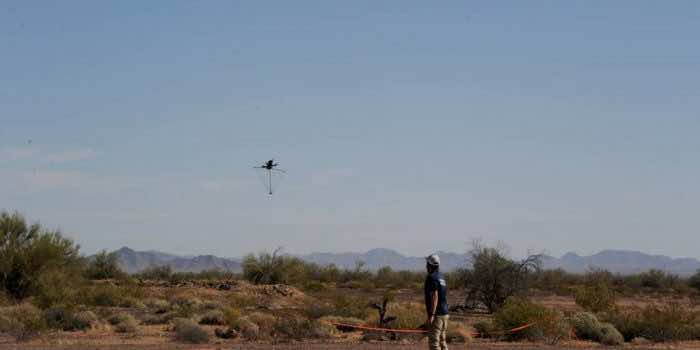A demonstration of high-power microwave technology capable of knocking out numerous drone threats was completed by the Pentagon’s Joint Counter-Small Unmanned Aircraft Systems Office.
The suppliers with high-power microwave capabilities, according to Army officers in charge of the endeavour, were successful in eliminating incoming drone threats, including two at once.

Drone swarms are becoming more dangerous; therefore, the Pentagon is hurrying to ensure it can counter them. The Army is leading the JCO, which was formed in late 2019. The office has already held three demonstrations.

Yuma Proving Ground in Arizona hosted the most recent test from April 4 to 22. Ground-based, aerial-denial systems with high-power microwave capabilities were brought by Epirus, Raytheon Technologies, and Leonardo DRS.
“What we primarily focused on in that first week for high-power microwave was how well the effector emitted,” Michael DiGennaro, the test team lead for JCO’s acquisition and resourcing division, said on May 11.
“We were looking at range to engage the inbound targets and the amount of time it took to either deter or defeat the target,” he added.
“It was hindered in that it did not have an antenna to radiate,” DiGennaro said of the Leonardo DRS system, also known as a “vector inversion generator.” The JCO, however, was able to evaluate the technology by handing over a detected threat from a government-owned command-and-control system and then generating the power needed to eliminate the threat.
“With that, we captured power output and the amount of time that the electromagnetic pulse was on the target just with instrumentation,” DiGennaro explained.

“It was able to defeat targets in the range that are generally associated with what is now in the field,” DiGennaro said, adding that the Epirus system “has the potential to be a little bit more effective in the future.” ”
“The ranges were somewhat shorter in their ability to defeat the incoming targets,” he added, adding that Raytheon’s capability “was very much in development, shows some promise for future development.”
The Pentagon also looked into technology that could counter tiny unmanned aircraft systems (UAS), selecting from a pool of 25 whitepapers submitted for consideration. Anduril Industries, Black Sage, CACI (California Analysis Center, Inc), Rafael Systems Global Sustainment, and (Science Applications International Corporation) SAIC were the five enterprises chosen.
“We had five very complex architectures out there,” DiGennaro said. “Each of them brought a host of different components for detection, identification, tracking, and defeat, and we tested against each of those components both individually and then as a system, culminating in a ‘defend the forward-operating base’ scenario.”


